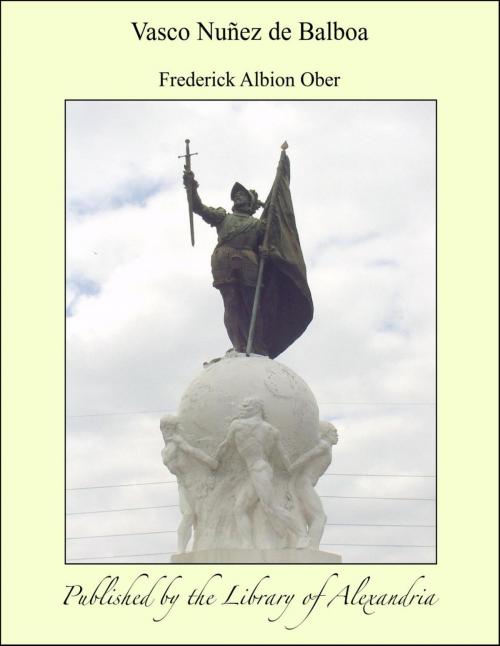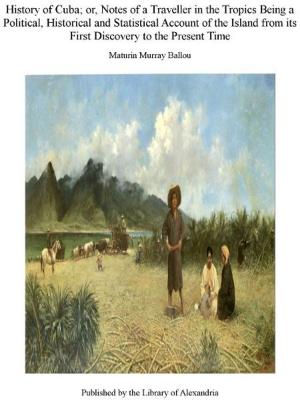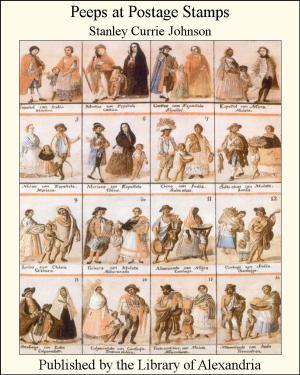| Author: | Frederick Albion Ober | ISBN: | 9781465570345 |
| Publisher: | Library of Alexandria | Publication: | March 8, 2015 |
| Imprint: | Language: | English |
| Author: | Frederick Albion Ober |
| ISBN: | 9781465570345 |
| Publisher: | Library of Alexandria |
| Publication: | March 8, 2015 |
| Imprint: | |
| Language: | English |
THE MAN-OF-THE-BARREL 1475-1510 SOMETIME in the summer of the year 1501 there landed on the southern coast of Santo Domingo one of the strangest expeditions that ever visited its shores. It was commanded by one Rodrigo de Bastidas, a rich notary of Seville, in Old Spain, who had become imbued with a passion for adventure, and so set forth, with a company contained in two caravels, over the route followed by Christopher Columbus in his third voyage to America. As he was guided by the skilled pilot Juan de la Cosa, who had been with Columbus in the West Indies, his voyage was in every respect successful, save in its ending. It included the entire length of Terra Firma (as the north coast of South America was then called), from the Gulf of Maracaibo to the Isthmus of Darien, whence, after profitable bartering with the Indians, Bastidas set sail for Spain. He had sought traffic only, and not conquest, hence had been everywhere received with open arms by the natives, who poured out their treasures of gold and pearls most lavishly, so that he and all his comrades were enriched. Only one other venture to this region, that of Pedro Niño, the year previous, had yielded such rich returns, and it was with exultation that the members of this expedition turned the prows of their caravels homeward. When half-way across the Caribbean Sea, however, they discovered, to their great alarm, that their vessels were leaking in every part, and upon investigation found the hulls full of holes, made by the destructive teredo, or ship-worm, the existence of which they had not suspected. The nearest land was the island of Santo Domingo, then known as Hispaniola, and, bearing up for it, they found a harbor in the Bay of Ocoa. The caravels were hardly kept afloat until this haven was reached, and foundered in port before their cargoes were landed. All the arms and ammunition aboard, as well as much of the provisions, went down with the vessels; but no lives were lost, and the most precious portion of the cargoes was saved, to the last pearl and nugget of gold. The governor of Santo Domingo at that time was Don Francisco de Bobadilla, who, though but a year or so in office, had already committed irreparable wrongs upon the natives of the island. But a few months had elapsed since he had sent Christopher Columbus and his brothers home to Spain in chains. Having sequestrated their effects, he was rapidly squandering his ill-gotten wealth, and actually living in the old admiral's castle. One hot midsummer day, as Governor Bobadilla was enjoying his siesta, or noonday nap, he was rudely awakened by one of his mounted scouts, who had ridden all night and all morning, coming in from the westward. Pushing aside the sentinel on duty in the lower court, he sprang up the stone stairs with jangling spurs, and, making his way to the balcony overlooking the river Ozama, where the governor's hammock was swung, he exclaimed: "Your excellency, I have dire news to report. It calls for immediate action, too, hence my intrusion upon your privacy
THE MAN-OF-THE-BARREL 1475-1510 SOMETIME in the summer of the year 1501 there landed on the southern coast of Santo Domingo one of the strangest expeditions that ever visited its shores. It was commanded by one Rodrigo de Bastidas, a rich notary of Seville, in Old Spain, who had become imbued with a passion for adventure, and so set forth, with a company contained in two caravels, over the route followed by Christopher Columbus in his third voyage to America. As he was guided by the skilled pilot Juan de la Cosa, who had been with Columbus in the West Indies, his voyage was in every respect successful, save in its ending. It included the entire length of Terra Firma (as the north coast of South America was then called), from the Gulf of Maracaibo to the Isthmus of Darien, whence, after profitable bartering with the Indians, Bastidas set sail for Spain. He had sought traffic only, and not conquest, hence had been everywhere received with open arms by the natives, who poured out their treasures of gold and pearls most lavishly, so that he and all his comrades were enriched. Only one other venture to this region, that of Pedro Niño, the year previous, had yielded such rich returns, and it was with exultation that the members of this expedition turned the prows of their caravels homeward. When half-way across the Caribbean Sea, however, they discovered, to their great alarm, that their vessels were leaking in every part, and upon investigation found the hulls full of holes, made by the destructive teredo, or ship-worm, the existence of which they had not suspected. The nearest land was the island of Santo Domingo, then known as Hispaniola, and, bearing up for it, they found a harbor in the Bay of Ocoa. The caravels were hardly kept afloat until this haven was reached, and foundered in port before their cargoes were landed. All the arms and ammunition aboard, as well as much of the provisions, went down with the vessels; but no lives were lost, and the most precious portion of the cargoes was saved, to the last pearl and nugget of gold. The governor of Santo Domingo at that time was Don Francisco de Bobadilla, who, though but a year or so in office, had already committed irreparable wrongs upon the natives of the island. But a few months had elapsed since he had sent Christopher Columbus and his brothers home to Spain in chains. Having sequestrated their effects, he was rapidly squandering his ill-gotten wealth, and actually living in the old admiral's castle. One hot midsummer day, as Governor Bobadilla was enjoying his siesta, or noonday nap, he was rudely awakened by one of his mounted scouts, who had ridden all night and all morning, coming in from the westward. Pushing aside the sentinel on duty in the lower court, he sprang up the stone stairs with jangling spurs, and, making his way to the balcony overlooking the river Ozama, where the governor's hammock was swung, he exclaimed: "Your excellency, I have dire news to report. It calls for immediate action, too, hence my intrusion upon your privacy















